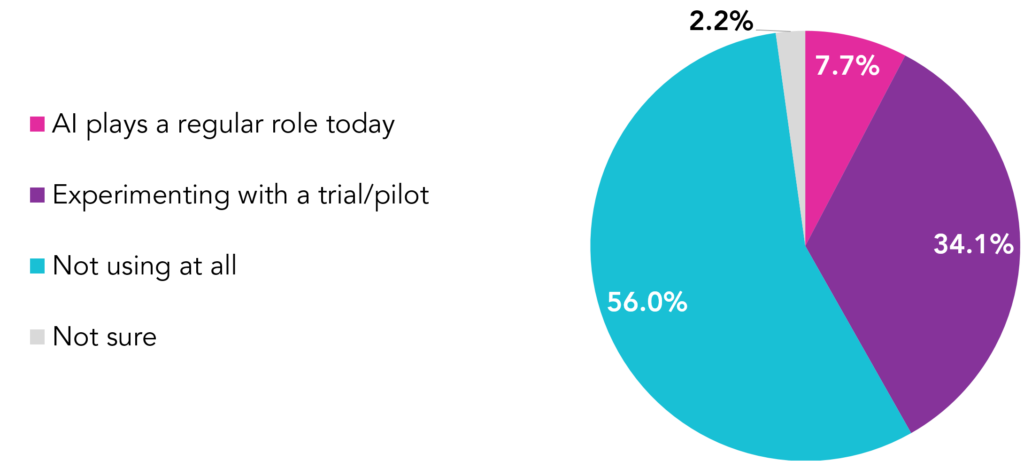One thing I learned while researching this article is that there’s a lot of information about Artificial Intelligence (AI) programs and machine learning out in the world right now, and hardly any of that information is detailed or consistent. Descriptions, check. Full disclosure, not so much.
There are reasons for this. Companies like Google, IBM and Facebook that have AI programs don’t want to give away trade secrets. These systems are expensive to create and maintain and are closely guarded because of that. Plus, the systems that teach themselves through machine learning are often unable to clearly explain their rationale for a particular choice. Those factors, combined with the sheer amount of data being processed, analyzed and converted into decisions make it so AI is complicated, awesome and not fully understood. But, we’re going to look at the few things we do know for sure.
What is AI?
According to Google:
“Artificial intelligence is the study of how to make machines intelligent or capable of solving problems as well as people can. At its core, machine learning is a new way of creating those problem-solving systems. For decades, programmers manually coded computer programs to provide outputs when given a certain input. With machine learning, we teach computers to learn without having to program them with a rigid set of rules. We do this by showing a system several examples until it eventually starts to learn from them.”
What this means for marketers and consumers is that AI is used to quickly accomplish highly complex analysis of consumer and sales data to increase sales, assist consumers and save time and money. AI and machine learning enable humans to take a step back and let the processors handle the analytical heavy lifting while we take care of other things.
AI is already used in many aspects of digital marketing
Programmatic buying is used extensively in Display, Social Media and Search marketing. This structure facilitates the process of buying ad inventory by analyzing cookie data and known targeted marketing information to allow marketers to make more informed decisions regarding who their target demographics are and what sites those audiences are likely visiting.
Beyond programmatic buying, IBM is using its AI program, Watson, to target audiences more efficiently, optimize online ad bidding, plan marketing efforts and even create ads themselves. “This automated technology has given clients up to 20 times ROI and lowered advertising cost per sale by up to 40 percent when compared with other solutions. It has also enabled more effective advanced KPI targeting including (testing), drive-to-store optimization and high-value customer targeting,” according to recent coverage by AdWeek.
AI makes talking to consumers easier
Chatbots have been the talk of marketing and e-commerce circles for a while now. They’ve grown in their ability to properly answer a variety of questions, and they save companies time and manpower. Much like search engine algorithm improvements, AI has made it possible for chatbot programs to better understand the nuances of human speech and become much more reliable in their ability to answer simple questions or direct consumers along their buying path.
While full adoption isn’t here yet, more than 40 percent of retail executives stated that AI either played a regular role in their customer service efforts or said they were beginning experimentation with the technology.
AI usage for customer service among U.S. retail executives

Source: Linc, “How AI Technology Will Transform Customer Engagement,” July 2017
AI helps consumers more than most people realize
If you think back to online shopping 10 years ago, the search bar on most e-commerce sites was basically useless. You needed either a near exact product description or an item number. Now, a customer can type in “men’s sandals” and sophisticated sites will pull back anything even close to men’s sandals. Misspell something in your search? AI is what helps the site understand you meant “RC car” and not “RV car” (try that on Amazon, it’ll correct it for you).

AI uses its knowledge base to find the context of our searches, even if we didn’t know we needed assistance. AI improves and expands that knowledge base anytime someone uses the e-commerce site. And, now it can even tell you after only a couple of purchases roughly how often you need to replace a product you buy somewhat regularly. Again, Amazon is what immediately comes to mind here, but many grocery store sites also have this feature due to the ability to track purchases through customer loyalty cards and the use of outside machine learning companies analyzing all that data.
AI platforms also allow retailers to analyze their sales patterns to govern price changes, fix stock-outs, determine the best timing and pricing for promotions and make strategic merchandising decisions that lead to more sales. Better and faster analysis is also fixing and preventing problems like “cherry picking” and cannibalization of other items and abandoned carts. In the long run, this reduces costs for consumers as retailers increase overall sales and are better able to stock and staff both online and brick and mortar stores.
A final word on AI
Overall, AI is still growing, is a bit secretive by nature and yet is already touching more aspects of daily life than most people probably realize. And, this is all just in the marketing field.
If you’d like to find out more about programmatic advertising or how to use data analysis to grow leads and improve your digital marketing campaigns, contact Mindstream Media Group for more information.








